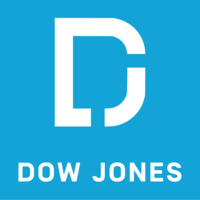JPMorgan Says Brent Crude Price May Reach or Exceed $100/bbl by Late Summer — OPIS
While most large investment banks believe Brent crude prices may rise above $90 a barrel over the next several months, JPMorgan Chase on Wednesday said reduced output from Russia could push the price to $100/bbl or more by late summer.
The bank's call was largely based on Russia's recent decision to increase crude production cuts by 471,000 barrels a day, dropping its total output to 9 million b/d by June.
JPMorgan analysts said they believe Russia's commitment, while surprising, is "genuine." The bank said it believes the move could push the European benchmark crude to $90/bbl in April, the mid-$90s/bbl by May and approach $100/bbl by September.
Brent crude futures have settled recently $5 to $17/bbl below those targets. The analysts said the expected increase in crude prices could push the average U.S. gasoline price to close to $4 a gallon by May, the highest number since 2022. They also put the odds that OPEC+ will extend its production cuts through the end of the year at 50-50.
The bank, however, said any enthusiasm for higher prices will likely be dampened by "multiple levers," adding that the U.S. has "policy space" to release as much as 60 million bbl of oil from the Strategic Petroleum Reserve, with as much as 500,000 b/d available over a four-month span.
JPMorgan also said that given high borrowing costs and a strong dollar, oil prices above $90/bbl could cause severe disruptions and lead to weaker demand. It said SPR releases are practical given that the reserve holds about 188 days of net import demand, more than twice the International Energy Agency's recommendation for 90 days of cover.
JPMorgan said the government can put SPR barrels onto the market through an emergency release by declaring a "severe energy supply disruption." That has been done on only four previous occasions - in 1991 during the Gulf War, in 2005 in the wake of Hurricane Katrina, in 2011 during the Libyan civil war and in 2022, when Russia invaded Ukraine, it added.
The bank said the White House also could try to exchange oil, giving up 2024 barrels now and buying crude later at what it expects would be a lower price.
The analysts said a $100/bbl price for Brent may be contingent on OPEC+ maintaining its production cuts through December. They added that the average U.S. retail gasoline price has already risen above $3.53/gal, up 15% from mid-December and some 9cts/gal higher than the March 2023 average.
On an inflation-adjusted basis, the average U.S. retail gasoline price would have to hit $5.74/gal and diesel would have to surpass $6.64/gal in order to match the third-quarter 2008 fuel spike. But the bank acknowledged that consumers do not tolerate the higher numbers and tend to be "myopic" when it comes to street prices.
The bank also suggested the U.S. has already seen a demand response with segments of the population cutting back on fuel consumption. U.S. gasoline demand rose by 93,000 b/d in January, but was down in February by 150,000 b/d year to year.
Consumption so far in March has been running at about a meager 15,000 b/d year-to-year increase, based on weekly data from the Energy Information Administration. Over the last year, however, EIA has often raised demand numbers in its monthly reports.
JPMorgan said a move to a $4/gal national average price for gasoline could potentially cut summer demand by 200,000 b/d. And it said a move to $5/gal in the average price for diesel from the Wednesday average of $4.05/gal could drop demand by 50,000 b/d to 100,000 b/d.
Currency fluctuations are another wildcard that could impede global demand, the bank said in the report. Emerging market currencies have weakened by 3.3% compared with the dollar this year and are down 20% since mid-2021.
Those fluctuations have created additional drag on developing countries with double-digit petroleum inflation reported in Thailand, South Korea, Taiwan and Vietnam.
This content was created by Oil Price Information Service, which is operated by Dow Jones & Co. OPIS is run independently from Dow Jones Newswires and The Wall Street Journal.
--Reporting by Tom Kloza, tkloza@opisnet.com; Editing by Jeff Barber, jbarber@opisnet.com
(END) Dow Jones Newswires
March 27, 2024 11:34 ET (15:34 GMT)
Copyright (c) 2024 Dow Jones & Company, Inc.-
What History Tells Us About the Fed’s Next Move
-
What’s Happening In the Markets This Week
-
Alphabet’s New Dividend: What Investors Need to Know
-
Going Into Earnings, Is Palantir Stock a Buy, a Sell, or Fairly Valued?
-
Going Into Earnings, Is Eli Lilly Stock a Buy, a Sell, or Fairly Valued?
-
What’s the Difference Between the CPI and PCE Indexes?
-
5 Stocks to Buy That We Still Like After They’ve Run Up
-
Markets Brief: Stocks Are Starting to Look Cheap Again
-
AbbVie Earnings: Next-Generation Immunology Drugs Help Offset Humira Biosimilar Pressure
-
Exxon Earnings: Ignore Earnings Shortfall as Long-Term Growth and Improvement on Track
-
American Airlines Earnings: We See Costs Overshadowing Market Share This Year
-
Snap Earnings: Advertising Growth and Snapchat+ Drive Monetization
-
STMicro Earnings: We Still See an Attractive Margin of Safety Despite a Poor First-Half Forecast
-
Alphabet Shares Surge on Strong Earnings, Dividend Surprise
-
Microsoft Earnings: Firm Beats Forecasts on Strong AI and Cloud Demand
-
PG&E Earnings: Near-Term Regulatory Certainty Supports Industry-Leading Earnings Growth

